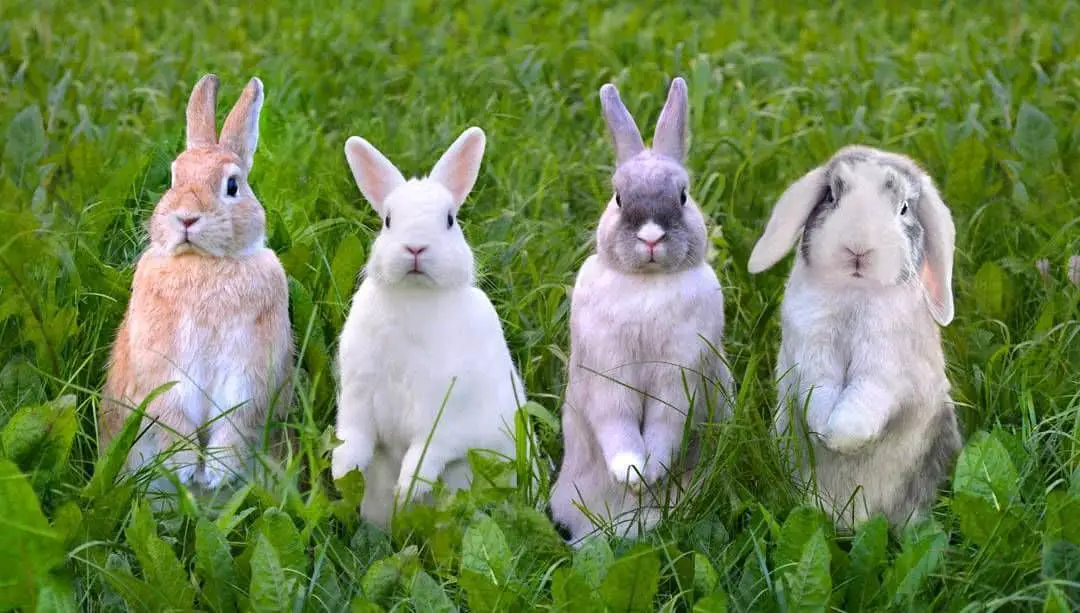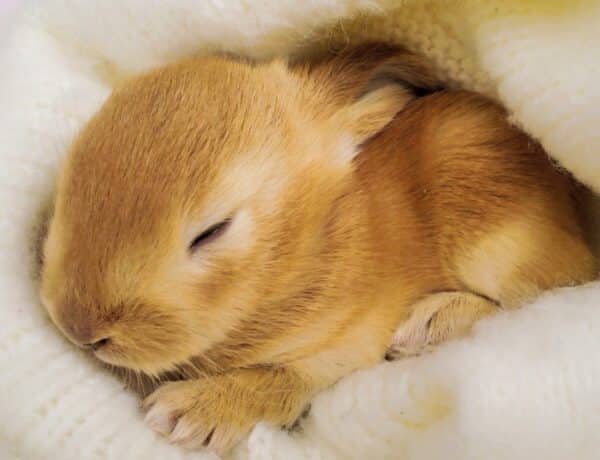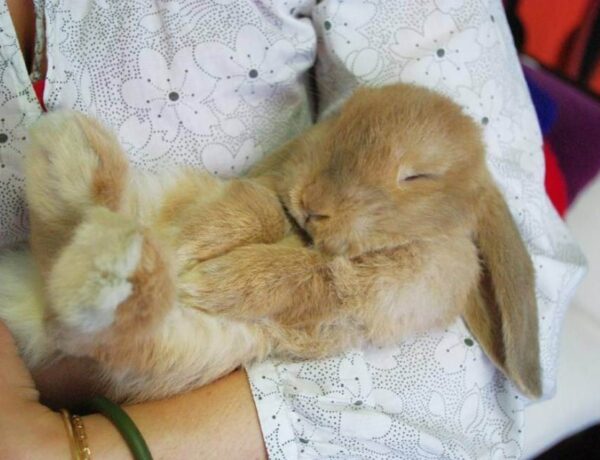Introduction
When Are Rabbits Most Active: Rabbits, those charming and ubiquitous creatures found in various parts of the world, exhibit fascinating patterns of activity that have long intrigued both naturalists and animal enthusiasts. Understanding when rabbits are most active is not only a matter of curiosity but also a valuable piece of knowledge for those who study and care for these furry mammals. These endearing herbivores are known for their crepuscular behavior, a term that describes their heightened activity during the dawn and dusk hours. However, the activity patterns of rabbits can vary depending on various factors, including their habitat, season, and reproductive cycle. In this exploration, we will delve into the intriguing world of rabbit behavior, shedding light on when they are most active and the underlying reasons for their distinctive activity patterns. Whether you’re a nature enthusiast, a rabbit owner, or simply curious about the lives of these adorable animals, this journey into the rhythms of rabbit activity promises to be both informative and captivating.
Rabbits are considered crepuscular animals, which means they are most active during the dawn and dusk hours. This behavior is an adaptation that helps them avoid predators. At these times, there is often reduced visibility for both diurnal and nocturnal predators, providing rabbits with a relative safety advantage.
While crepuscular activity is the general pattern for rabbits, there can be variations based on species and environmental conditions. Some species of rabbits may lean more towards being nocturnal or diurnal depending on their habitat and the presence of predators. In areas with less predation pressure, rabbits might become more diurnal.
Rabbit activity patterns can also shift with the seasons. In colder climates, rabbits fast may become more diurnal during the summer months when food is abundant and temperatures are more favorable. In contrast, during the winter, they might be more crepuscular to conserve energy and stay warm. The reproductive cycle of rabbits can influence their activity patterns. During the breeding season, which can vary among species and regions, rabbits may increase their activity levels, particularly during the early morning and late evening, as they search for mates and establish territories.

Are rabbits most active at night?
Bunnies are nocturnal, right? Nope! Another question that people often ask is whether rabbits sleep mostly during the day or at night. And the answer is neither. They are crepuscular, meaning that they are most active at dusk and dawn.
Crepuscular Activity
Crepuscular animals, like rabbits, have adapted to take advantage of the low-light conditions during these periods. They have a keen sense of vision in low-light situations, which allows them to navigate their surroundings and forage for food. During the early morning and late evening hours, rabbits are typically more alert and active, making it an ideal time for them to feed and socialize.
Nocturnal vs. Crepuscular
While rabbits exhibit crepuscular behavior, it’s important to differentiate between crepuscular and nocturnal animals. Nocturnal animals are primarily active during the night and have adapted to low-light conditions for hunting and survival. In contrast, crepuscular animals are most active during twilight, which provides a compromise between the safety of darkness and the visibility of daylight.
Rabbits at Night
Although rabbits are not considered strictly nocturnal, they may still be active at night, especially when the moon is bright or when there is minimal disturbance in their environment. In these conditions, they might venture out to forage or engage in other activities. However, their level of activity during the night is generally lower compared to dawn and dusk.
Factors Influencing Rabbit Activity
Several factors can influence rabbit activity patterns, including:
Predator Presence: The presence of predators can significantly affect a rabbit’s behavior. When they sense danger, rabbits may become more cautious and less active.
Weather: Weather conditions, such as temperature and wind, can impact a rabbit’s activity. They may be more active on mild nights and less active during harsh weather.
Food Availability: The availability of food plays a crucial role in a rabbit’s daily routine. If food sources are scarce during crepuscular hours, rabbits may adjust their activity to search for sustenance at night.
Habitat: The type of habitat rabbits inhabit can also influence their activity. In urban areas with less human disturbance, rabbits might be more active at night, while those in rural or natural settings may stick to their crepuscular patterns.
What time of day are rabbits least active?
Similar to other animals like cats, rabbits are crepuscular creatures, which means that they’re most active during dusk and dawn times, staying up late in the evening and waking up early in the morning and sleeping and dozing off during the night and day.
Rabbit Activity Patterns
Rabbits are crepuscular animals, which means they are most active during the dawn and dusk hours. These periods, when the sun is low in the sky, provide a balance between the safety of darkness and the visibility of daylight. During these times, rabbits are alert, foraging for food, and engaging in social activities.
Least Active During Daylight
The least active time for rabbits is typically during the bright daylight hours. As crepuscular animals, they have evolved to avoid the harsh sunlight and the heightened activity of potential predators during this time. Rabbits have a natural instinct to hide and rest during the day to conserve energy.
Rabbits are often seen lounging in their burrows, under bushes, or in shaded areas during daylight. They may also dig shallow depressions in the ground, known as forms, where they can rest comfortably while remaining hidden from predators. These daytime resting periods are crucial for their well-being as they help rabbits recover energy expended during their active dawn and dusk periods.
Factors Influencing Rabbit Activity
While rabbits are generally least active during the daytime, several factors can influence their behavior, causing variations in activity levels:
Temperature: Extremely hot or cold weather can alter a rabbit’s activity patterns. They may become less active during the heat of the day and more active when temperatures are milder.
Predator Presence: The presence of predators can keep rabbits hunkered down in their hiding spots during the day. Fear of being spotted by a predator will keep them motionless and cautious.
Food Availability: If food is scarce during dawn and dusk, rabbits may be forced to extend their activity into daylight hours to find sustenance.
Disturbances: Human or animal disturbances in their environment can also affect rabbit activity. Noise, movement, or other disruptions may cause them to remain hidden during the day and limit their exploration.
Do rabbits have more energy at night?
But in reality, rabbits need it to rest and prepare for a night of activity. They sleep about 12 to 14 hours a day, according to the Ohio State University website. The most active times for rabbits are early morning, night and dusk. The rabbit is quietest during the day, usually between noon and four in the afternoon.
Understanding Rabbit Energy Levels
To determine if rabbits have more energy at night, we need to consider their natural behavior patterns. As crepuscular animals, rabbits are most active during the dawn and dusk hours. These twilight periods are when they are naturally wired to be alert, foraging for food, and engaging in social activities.
Factors Influencing Rabbit Energy Levels
Crepuscular Behavior: Rabbits’ crepuscular nature means that they have adapted to be most active during low-light conditions, such as dawn and dusk. During these times, they tend to have higher energy levels.
Nighttime Activity: While rabbits are not strictly nocturnal, they may exhibit increased activity at night, especially when the moon is bright or when they perceive minimal disturbances in their environment. However, their activity at night is generally lower than during dawn and dusk.
Daytime Rest: Rabbits typically rest and conserve energy during the daylight hours, as this is when they are at greater risk of predation and the sun can be quite intense. Daytime rest helps them recover from their early morning and late evening activities.
Temperature: Temperature can play a significant role in rabbit energy levels. They may be less active during extreme cold or hot weather, as they seek shelter and conserve energy to regulate their body temperature.
Diet and Nutrition: A rabbit’s energy levels can also be influenced by their diet. A well-balanced diet with the right nutrients can help maintain their energy levels throughout the day.
Stress and Disturbances: Stressful situations or disturbances in their environment can temporarily affect rabbit energy levels. If rabbits feel threatened or anxious, they may become more active at unusual times or remain in hiding.
Why are bunnies hyper at night?
Rabbits are crepuscular animals, which means they are naturally active in the early morning and in the late evening. They’re not going to have the same sleep schedule as you and will almost always wake up before you do.
Nocturnal Instincts
Bunnies, by nature, are crepuscular animals, meaning they are most active during dawn and dusk. However, some bunnies may exhibit brief periods of nocturnal activity, particularly during a full moon when there is more ambient light. This nocturnal behavior may be a remnant of their wild ancestors’ survival strategies, as some predators are more active at night.
Excess Energy Release
Like many animals, bunnies may have bursts of energy to expend, and nighttime can be an opportune time for this. During the day, they might rest and conserve energy, especially in the comfort of their safe, enclosed habitat. At night, with fewer distractions and disturbances, they may feel the urge to release pent-up energy through hopping, running, and playing.
Exploration and Foraging
Nighttime can offer bunnies a quieter and less chaotic environment for exploration and foraging. In the wild, this could be when they search for food sources and investigate their surroundings. For pet bunnies, this exploration can involve nibbling on furniture, digging at carpet corners, or rearranging their bedding.
Environmental Factors
Several environmental factors can influence a bunny’s nighttime hyperactivity:
Noise Levels: Some bunnies are more sensitive to noise and may become more active if they perceive sounds that they interpret as potential threats.
Temperature: Bunnies are more comfortable when it’s cooler, so they may be more active at night when the temperature is lower.
Full Moon: As mentioned earlier, a full moon can provide more natural light, encouraging bunnies to be active during the night.
Social Interaction: If you have multiple bunnies or other pets, they might engage in nighttime play or territorial disputes.
Do rabbits like it dark at night?
Even if they do not need a dark setting for sleeping, they enjoy both light and darkness. When it comes to wild rabbits, they look for a dark place to sleep and retire after doing a lot of physical activities. Some pet rabbits also prefer the same condition for sleeping.
Natural Behavior
In the wild, rabbits have adapted to a world where the cover of darkness provides them with some level of safety from predators. During the night, they tend to be more cautious and prefer to stay hidden in burrows, under thick vegetation, or other concealed spots. Darkness offers them a level of security, making it less likely that they will be detected by potential threats.
However, it’s important to note that rabbits are crepuscular animals, which means they are naturally active during the twilight hours. This behavior is an adaptation that allows them to make the most of both the safety of darkness and the visibility of daylight.
Domestic Rabbits
Pet rabbits, on the other hand, live in controlled environments and may not have the same concerns about predators as their wild counterparts. Nevertheless, many domestic rabbits retain their crepuscular tendencies. They often rest during the brighter daylight hours and become more active during dawn and dusk.
Understanding this natural behavior can be beneficial for rabbit owners, as it helps create an environment that aligns with their bunnies’ instincts and preferences.
Providing Darkness at Night
While domestic rabbits may not require total darkness at night, providing a dimly lit or dark environment can be beneficial for their rest and well-being. Here are some reasons why rabbits might appreciate darkness at night:
Rest and Relaxation: Darkness can help rabbits get the restful sleep they need. It allows them to relax and recharge, preparing them for their more active periods during the crepuscular hours.
Reduced Stress: Excessive light during the night can disrupt a rabbit’s sleep cycle and may lead to stress or anxiety. A quiet and dimly lit environment is more conducive to their natural rest.
Behavioral Well-Being: Rabbits are creatures of habit, and providing a consistent light-dark cycle can contribute to their overall behavioral well-being.
Preventing Sleep Disturbances: A dark environment can help prevent disturbances to a rabbit’s sleep patterns caused by external light sources or other pets moving about the home.
Should rabbits be shut in at night?
Living in an enclosed space can be horrible for a rabbit. Remember that your bunny will still be active for a few hours after you go to bed. It’s not as simple as locking them up and waiting for them to fall asleep. They need to feel comfortable in their surroundings.
Predator Protection: One of the primary reasons for shutting rabbits in at night is to protect them from potential predators. Rabbits are prey animals, and various nocturnal predators such as foxes, raccoons, owls, and cats pose a threat to their safety. By keeping them in a secure enclosure at night, you can significantly reduce the risk of predation.
Weather Conditions: Weather can be unpredictable, and exposure to extreme cold, rain, or wind during the night can be harmful to rabbits. Providing shelter in their enclosure ensures they have a safe and comfortable place to retreat to in adverse weather conditions.
Escape Prevention: Rabbits are agile and can be surprisingly good at digging or finding gaps to escape from their enclosures. At night, when visibility is low, it’s more challenging to monitor their behavior. Keeping them securely enclosed can prevent escape attempts that may lead to injury or becoming lost.
Noise and Disturbances: Depending on your location, various nighttime noises and disturbances can stress rabbits. Loud noises, the presence of other animals, or even nocturnal human activities can disrupt their sleep and overall well-being. An enclosure can provide a quieter and more controlled environment.
Natural Behavior: While rabbits are crepuscular and most active during dawn and dusk, they may still exhibit some nocturnal activity. In a secure enclosure, they can engage in nighttime behaviors without the risk of encountering predators.
How often do rabbits poop?
200-300 poops per day
Average sized bunnies will make 200-300 poops per day. They should be uniform in size and shape which means rounded and pea to garbanzo sized. The size of your bunny won’t always predict the size of their poops.
Frequency of Rabbit Poop
Rabbits are coprophagic animals, which means they produce two types of feces: hard, dry fecal pellets and soft, moist cecotropes. The frequency of their poop varies depending on their age, diet, and individual factors. Here’s a general guideline:
Adult Rabbits: Typically, adult rabbits defecate approximately 100-300 fecal pellets per day. These hard pellets are the ones you’ll most commonly find in their habitat.
Cecotropes: In addition to fecal pellets, rabbits produce cecotropes, which are softer, mucous-covered droppings that are re-ingested directly from the anus. This is a crucial part of their digestive process and occurs once or twice a day.
Dietary Factors
The frequency and consistency of rabbit poop can be influenced by their diet:
Hay: A diet rich in high-quality hay, such as timothy hay, encourages regular bowel movements and healthy digestion. Hay provides the necessary fiber rabbits need for proper gut function.
Pellets: Commercial rabbit pellets should be fed in moderation, as an excessive amount can lead to obesity and softer stools. High-fiber pellets are preferable.
Fresh Greens: Fresh vegetables and greens are essential for a balanced diet but should also be given in moderation. Too many greens can lead to softer and more frequent droppings.
Treats and Sugary Foods: Limit treats and sugary foods, as they can disrupt digestion and lead to inconsistent or unhealthy poop.
Age and Health Factors
The age and overall health of a rabbit can affect their poop frequency:
Kittens: Baby rabbits (kittens) usually have more frequent and softer stools than adults. This is normal as their digestive systems develop.
Elderly Rabbits: Older rabbits may experience changes in their digestive health, leading to alterations in poop frequency or consistency. Regular veterinary check-ups are crucial for senior rabbits.
Gastrointestinal Issues: Health problems like gastrointestinal stasis can significantly impact poop frequency and consistency. If you notice changes in your rabbit’s droppings, consult a veterinarian promptly.
Are bunnies intelligent?
Yes, it turns out that rabbits are very smart! Some breeds are even trainable. For example, you can teach a bunny to recognise their names and come to you when called. Rabbits also have a very good memory: they don’t forget negative experiences and emotions easily.
Problem Solving
Bunnies have a knack for problem-solving, especially when it comes to escaping enclosures or reaching a desirable food source. Many rabbit owners can attest to the creativity and determination these animals display when trying to overcome obstacles. Whether it’s figuring out how to open a latch or reach a treat placed just out of reach, rabbits demonstrate a level of problem-solving intelligence.
Learning and Training
Bunnies can learn through positive reinforcement training. They can be taught commands, such as coming when called, using a litter box, or performing tricks. While they may not be as eager to please as some other pets, their ability to grasp these concepts shows a level of intelligence and adaptability.
Social Intelligence
Rabbits are social animals that form complex social structures in the wild and often have strong bonds with their human caregivers. They can recognize individual people and other animals, display affection, and communicate their needs through body language and vocalizations. Understanding and responding to these social cues require a certain level of intelligence.
Spatial Awareness
Rabbits have a keen sense of spatial awareness. They are skilled at navigating their environment, including tight spaces and tunnels, with agility and precision. Their ability to judge distances and angles contributes to their intelligence in adapting to their surroundings.
Communication
While rabbits may not “talk” in the way humans or some other pets do, they communicate with a variety of vocalizations, thumping, and body language. Understanding and interpreting these cues is essential for rabbit owners and reflects the intelligence of these animals.
Memory
Rabbits have demonstrated impressive memory skills. They can remember their environment, recognize familiar people and other animals, and recall past experiences. This memory capability can aid in problem-solving and adaptation to changes in their surroundings.
Survival Instincts
In the wild, rabbits need to be vigilant and employ a range of survival strategies to evade predators. Their ability to stay alert, recognize potential threats, and escape danger showcases a form of intelligence geared towards survival.

Conclusion
The activity patterns of rabbits are a dynamic interplay of factors, including their crepuscular nature, environmental conditions, seasonal changes, reproductive cycle, social behavior, foraging needs, and human interaction. While rabbits are generally considered crepuscular animals, displaying heightened activity during the dawn and dusk hours, their behavior can adapt to various circumstances.
Understanding when rabbits are most active is not only of interest to naturalists and researchers but also crucial for those who care for domesticated rabbits. Whether in the wild or as beloved pets, these furry creatures continue to enchant us with their unique rhythms of life. Their adaptability to changing conditions and their ability to strike a balance between vigilance and resourcefulness serve as a testament to the marvels of nature. In observing and appreciating when rabbits are most active, we gain not only insights into their behavior but also a deeper connection to the fascinating world of these charming mammals.





No Comments